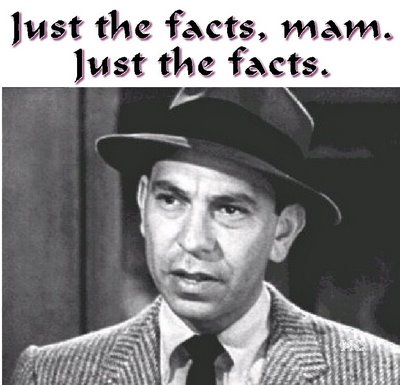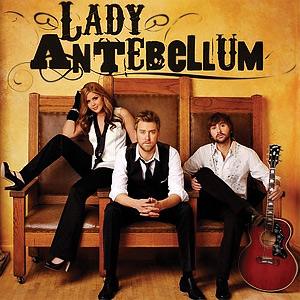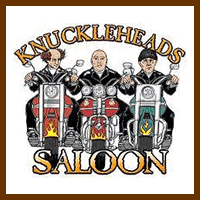Was a time the Kansas City Star owned this town when it came to, not just news coverage but editorial opinion. It may not always have gotten its way, but it carried a pretty big stick and when it’s writers and editors shouted, “Jump!” the next thought that crossed their minds was “How high?”
Times have changed.
Don’t get me wrong, the “paper” is still Kansas City’s largest gatherer and reporter of news and that’s not likely to change anytime soon. If ever. That said, there are plenty of other voices around today and locals are too well informed to inhale every puff of smoke the Star puts out when it comes to shaping opinions.
Take today’s editorial glorifying the Sprint Center.
My story about the Sprint Center five-year anniversary Sunday was probably too long for many readers (as was the Star‘s) but in a nutshell I pointed out how millions of dollars were squandered and lots of hot air dispensed by the supporters in courting support of the new arena from voters. With precious little oversight by the quote/unquote newspaper of record.
And that’s what we got more of today in an editorial headlined, “Sprint Center has been a success story for KC.”
“Sprint Center has been a big success…” it begins. “The city has reaped more than a million dollars a year in extra income from the arena’s successful operations.”
So let’s cut right to the chase.
While that may be true, the last time I checked Kansas City were dropping a million bucks a year at Kemper Arena which went from hosting 150 real deal events a year to 25 weak-as-a-kitten dates. On top of which Kansas City’s still paying for Kemper’s late in life redo and parking additions…to the tune of about $2 million a year.
 Add to that now that the city is faced with spending millions more to tear Kemper down and possibly build another losing proposition to house the nobody-really-cares-anymore American Royal.
Add to that now that the city is faced with spending millions more to tear Kemper down and possibly build another losing proposition to house the nobody-really-cares-anymore American Royal.
That’s right,
I’ve lived here most of my life and damn few people really care one way or the other about the American Royal. With the exception of the barbecue contest which has taken on a life of its own, fully apart from horse and cow and pig judging that is the Royal’s core.
And don’t forget the $5 million the city blew getting Municipal Auditorium ready for the college coaches and their questionably successful basketball “Experience” museum.
No sooner had Kansas City blown its $5 million to ready the space for the “Experience” than the coaches jumped ship and hopped on KC mayor Kay Barnes bandwagon to relocate at Sprint.
 Remember what former President Bill Clinton said at the recent Democratic Convention about having to do the arithmetic? The Star didn’t bother before or after.
Remember what former President Bill Clinton said at the recent Democratic Convention about having to do the arithmetic? The Star didn’t bother before or after.
What’s humorous too is that after all that baiting of KC’s sports-loving public about getting an NHL or NBA team, the Star editorial – authored likely by longtime Sprint Center yell leader Yael Abouhalkah – was reduced to parroting excuses offered by promoter AEG for not needing an anchor tenant team. That they can book more concerts without one.
To an extent that’s true. With so many dark dates because we don’t have a team there are fewer conflicts.
But do the editors at the Star really believe the Sprint Center picked up 41 more concerts than it would have otherwise gotten if it had a full slate of regular season NBA home games?
Having booked concerts for several years and worked with promoters large and small, I can tell you how the game is played.
Chances are Kansas City would have missed out on a handful of shows or events every year if it had an NHL or NBA team. But what happens when there’s a conflcit is the touring artists re-route their shows whenever possible for an alternate date.
Trust me, Lady Antebellum‘s not going to pass up a fat paycheck in KC if at all possible.
And 41 home NBA games isn’t something to be scoffed at or rationalized away.
Why do you think the Power & Light District is grousing about Sprint not landing a team? Like they have no clue but behind the scene geeks like Abouhalkah – who seldom if ever even attend to a concert at Sprint – somehow do?
Please.
That’s what’s wrong with pretending you understand how a given business or industry works when you obviously don’t. You don’t gain that understanding by swallowing whole the excuses offered by the people who failed to get the job done.
Which is exactly why the Star needs to start getting serious about its watchdog role.
And that goes beyond busting greedy bible thumpers.
The newspaper’s paying (advertiser) customers deserve some oversight as well.











Hearne’s emphasis on the actual numbers reminds me of many studies done on the efficacy of Pro Sports team’s economic benefit to the community and how the numbers are manipulated to, at best disingenuous legerdemain, and at worst flagrant malfeasance in the promotion of kleptocratic agenda.
http://www.cato.org/publications/commentary/politicians-team-owners-snooker-sports-fans-taxpayers
A quote–
“An older study looked at 12 stadium areas between 1958 and 1987 and found that professional sports don’t drive economic growth. A shorter-term study looked at job growth in 46 cities from 1990 to 1994 and found that cities with major league teams grew more slowly. Even worse, taxpayers still service debt on now-demolished stadiums, including the $110 million that New Jersey still owes on the old Meadowlands and the $80 million that Seattle’s King County owes on the Kingdome. And we shouldn’t forget that local governments often employ property-rights-trampling eminent domain to facilitate these money-squandering projects.”
I reccomend the article, I was gobsmacked by the numbers and the blatant lies told to the public concerrning the economic benefit.
One more–
“Other evidence casts doubt on whether whatever revenue stadiums attract actually constitutes an economic plus. Stanford economist Roger Noll has noted that the majority of attending fans come from within a 20-mile radius, such that money they spend would otherwise have gone to another form of local entertainment or recreation. In that light, publicly subsidized stadiums are at best zero-sum endeavors — a shift of resources called the “substitution effect.”
Moreover, any real benefits go to ownership and players. A 1999 Cato Institute report found that 55% of the gains from subsidies to pro sports teams go to players and 45% to owners. It is thus unsurprising that a more recent study suggests that teams and their stadiums are valued much less by the public than commonly perceived.”
This, from Hearne, certainly rings true.—
“Having booked concerts for several years and worked with promoters large and small, I can tell you how the game is played.
Chances are Kansas City would have missed out on a handful of shows or events every year if it had an NHL or NBA team. But what happens when there’s a conflcit is the touring artists re-route their shows whenever possible for an alternate date.
Trust me, Lady Antebellum‘s not going to pass up a fat paycheck in KC if at all possible.
And 41 home NBA games isn’t something to be scoffed at or rationalized away.”
In light of the now decades long failure of our local professional sports teams (The soccer exception noted.) and Yael Abouhalkah’s penchant for amanuenses, Hearne’s article transcends the KC Star’s deslutory effort with veractiy and depressing, but immutable truth.
Full disclosure.
I DO think the Sprint Center is really cool looking and does add to the city.
Is it worth the money and effort?
I don’t know.
🙂
Sprint is listed on The Star’s web site as one of the paper’s major advertisers, so the aforementioned editorial is much in keeping with the old adage, “Don’t bite the hand that feeds you.” That said, an in-depth overview of the financial picture associated with the operation of Softbank, er, the Sprint Center, Kemper Arena, Municipal Auditorium and the Power & Light District (did I miss anything?) is certainly in order. To be sure, the Sprint Center has hosted a goodly number of concerts over the past five years, not to mention some basketball and exhibition hockey games here and there, but the facility was built with the hoped-for presence of an NBA or NHL team in mind, so at least in that sense, it hasn’t been a success. I’m afraid that Kemper Arena has pretty much served its purpose and needs to go, as the city can’t afford to maintain it over the long run. Municipal Auditorium? It’s a real shame, given the rich basketball history connected to this structure, that the National Association of College Basketball Coaches chose to abandon its plans to set up quarters there in favor of some space at the Sprint Center, especially after the city had spent all that money to make the auditorium a little nicer. In this day and age the city can’t afford $5 million mistakes! Chuck, for one, likes the look of the “glass house” – I don’t – but in light of the distinct possibility that the Sprint Center may never get an anchor tenant and could become less and less of a draw for concert-goers, the place eventually may come to be known as the “haunted house” as operating expenses easily exceed total revenue.
I see by The Star that it’s “SoftBank” and not “Softbank”. My error. At any rate, the folks who come up with these rather grandiose economic impact statements for one-time events such as the All-Star Game and ongoing attractions such as the Power & Light District are pretty much cut from the same cloth as the folks who invariably tell us that the lottery and the casinos are the ticket to prosperity we’ve all been looking for as a society, eagerly claiming that the gaming industry creates numerous local jobs while generating millions of dollars for schools and highway projects. Unfortunately, more often than not the hoped-for results haven’t panned out.
I just watched “Ruckus” and the participants were over the top with praise for the Sprint Center and the millions it is contributing to the city coffers.
7 million a year was the number they were using.
It was on my DVR and I can only take 1 hour of college football on Sat.
What can I tell ya…
The conundrum to keep in mind re: a professional sports tenant is that the ownership usually insists upon (and gets) most of the revenue-generating perks (merch, food & bev, skybox fees) their occupancy contributes — even a piece of the entire pie. The city gets 30 more nights of sales tax revenues and added e taxes from the folks working the venue (and 2% non- res entertainment tax to the State), but with the takeaways, it’s a zero sum game. And if the team doesn’t do business ( remember the KC Kings?), some of those games are going to be played in front of 2,000 diehard fans.
Not necessarily a panacea.
That’s pretty much true, but don’t sell AEG short on having negotiated for those same perks. And an extra 30 to 40 nights a year in sales tax revenue and people eating and drinking downtown is nothing to sneeze at.
Just like the money being lost at Kemper and Municipal isn’t.